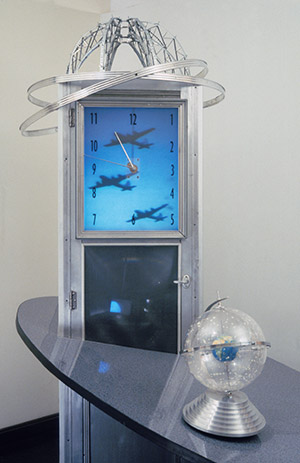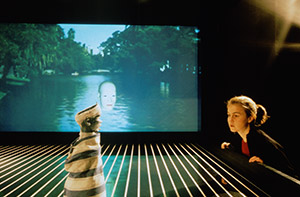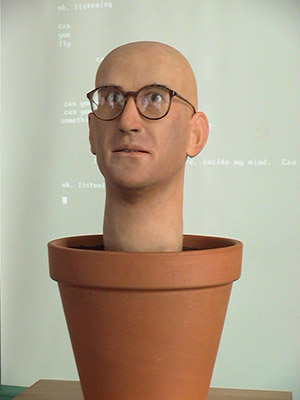
Ken Feingold Collection
The Goldsen Archive is honored to house the working archive of artist Ken Feingold (born 1952, USA). Feingold has exhibited his work in video, drawing, film, sculpture, photography, and installations since 1974. Developed in residencies in Argentina and across Asia, his works have set international benchmarks for excellence in the fields of video, interactive installation, and AI robotics. Having taught at Princeton University and Cooper Union for the Advancement of Art and Science, among others, Feingold is the recipient of fellowships and prizes from the Guggenheim Foundation, Rockefeller Foundation, National Endowment for the Arts, Japan/US Friendship Commission, and Fundación Telefónica. His works have been featured at the Whitney Biennial and in museums across the globe and are held in the collections of the Museum of Modern Art, NY; ZKM Center for Art and Media, Karslruhe; Kiasma Museum of Contemporary Art, Helsinki; the National Gallery of Canada, Centre Georges Pompidou, Paris; Hamburger Kunsthalle, Hamburg; Museum of Contemporary Art and Design, San Jose, Costa Rica; Fortuny Museum, Venice.
Feingold developed his craft in the 1970s as a student at Cal Arts and as a studio assistant to John Baldessari in Los Angeles and Vito Acconci in New York City. In the 1980s, his video works and installations were included in the 1985 and 1989 Whitney Biennials and exhibited widely in Europe and America. He developed his work across Asia in 1985 and then pursued a three-year project in South Asia resulting in the series of video works Distance of the Outsider, which includes "India Time" (1987) and “Life in Exile" (1988), a series of interviews with Tibetan philosophers and former political prisoners living in exile in India. His 1990 residency in Tokyo, with a Fellowship from the Japan/US Friendship Commission, led to the completion in 1991 of his first interactive artwork "The Surprising Spiral.” In the late 1990s, he maintained a studio in Buenos Aires and developed his first interactive conversation works. He integrated robotics and AI in his works across the new millennium. During this period when artists turned to engineers and coders for collaboration in new media works, Feingold was committed to the craft of coding and building his own works. The Feingold collection includes many of his video and interactive works as well as the original drawings and specs for his broad suite of artworks.
Feingold celebrated his donation of this important artistic collection to Goldsen by exhibiting The Animal, Vegetable, Mineralness of Everything (2004) in Cornell’s Herbert F. Johnson Museum of Art for the 2022 Cornell Biennial, Futurities, Uncertain.
Specific materials include extensive project notes, source code, and artist drawings, an expansive array of electronic art exhibition catalogues, in which Feingold participated, as well as an extensive collection of digital copies of original works in video, computing, and robotics.
- Catalogues, Exhibition Announcements, Press Releases, 1974-2005: Box 1-22
- Artworks: Project Notes, Sketches, Manuals, Source Code: Box 22-27; Sketches, Notes, Ideas for Artworks: Box 28
- Digital Files
Please check the Finding Aid for a more detailed list of the Ken Feingold holdings which are available for research onsite in the Division of Rare and Manuscript Collections reading room. Reservations for a research slot can be made online.

Childhood Hot & Cold Wars, 1992-93.

Séance Box No 1, 1998-99.

Sinking Feeling, Detail, 2001.